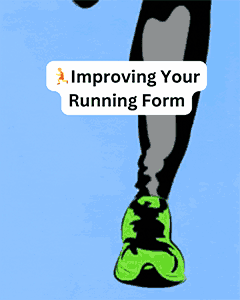Improving Your Running Form: A Podiatric Perspective

By Jack Eastwood
Running is one of the most accessible forms of exercise, requiring minimal equipment and offering numerous health benefits. However improper running form can lead to a variety of injuries, ranging from minor discomfort to more serious issues whether it be a something superficial or something more in depth. As podiatrists, we understand the importance of assessing running form to prevent injuries and to optimise performance whether that means improving your time or simply being able to run for longer. In this blog post, we’ll discuss the significance of running assessment from a podiatric perspective and provide tips for improving your running form.
The Importance of Running Assessment:
When it comes to running, proper form is essential for efficiency, injury prevention, and overall performance. As podiatrists, we specialise in diagnosing and treating conditions related to the feet, ankles, and lower extremities. Our knowledge into the lower limb helps us to understand the biomechanics going through the foot and the lower leg when running. Which enables us to reduce the chance of injuries occurring such as plantar fasciitis, shin splints, and stress fractures.
During a running assessment we would evaluate various aspects of an individual’s gait which includes foot strike pattern, stride length, cadence, and alignment. By analysing these factors, we can identify any abnormalities or inefficiencies that may be contributing to discomfort or injury.
Assessing Running Form:
Here are some key components to think about when looking at running form:
- Foot Strike Pattern:
We would observe how your foot contacts the ground during each stride in which we would like to see a uniform heel strike, midfoot strike, and forefoot strike. Each pattern has its own set of advantages and disadvantages.
- Stride Length and Cadence:
Stride length refers to the distance covered with each step, while cadence refers to the number of steps taken per minute. Optimal stride length and cadence vary depending on factors such as running speed, terrain, and individual biomechanics. We can help you find the right balance to maximize efficiency and minimise strain on your body.
- Alignment and Posture:
We assess your overall alignment and posture while running, looking for any deviations from the ideal central alignment. Issues such as overpronation, supination, pelvic tilt, and excessive forward lean can contribute to biomechanical imbalances and increase the risk of injury due to increased pressure on certain structures. Through targeted exercises and adjustments (with the use of orthoses where required), we can help you improve your alignment and running mechanics.
Tips for Improving Running Form:
Based on general assessments, here are some general tips for improving your running form:
- Focus on posture: maintain an upright posture with your head up, shoulders relaxed, and core engaged.
- Land softly: aim for a light, quiet landing with each foot strike to reduce impact forces on your joints. This helps to protect your knees and ankle.
- Increase cadence: gradually increase your cadence (steps per minute) to improve efficiency and reduce stress on your muscles and joints.
- Strengthen weak areas: target specific muscle groups, such as the hips, glutes, and core, to address any weaknesses or imbalances that may be affecting your running form.
- Invest in proper footwear: wear running shoes that provide adequate support, cushioning, and stability for your foot type and running style.
Incorporating a podiatric perspective into your running assessment can help identify underlying issues and improve your running form to prevent injuries and enhance performance. By addressing biomechanical imbalances and implementing targeted interventions, you can run more efficiently, comfortably, and safely. Remember to listen to your body and consult with a podiatrist if you experience persistent pain or discomfort while running. With the right guidance and approach, you can enjoy the many benefits of running while minimising the risk of injury.



